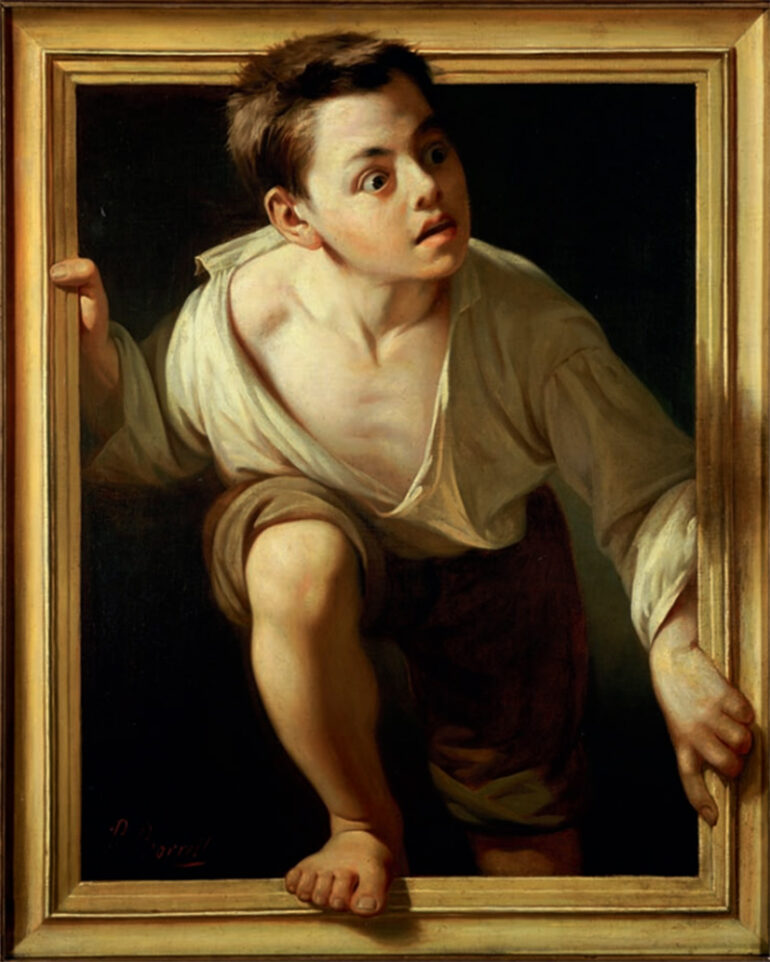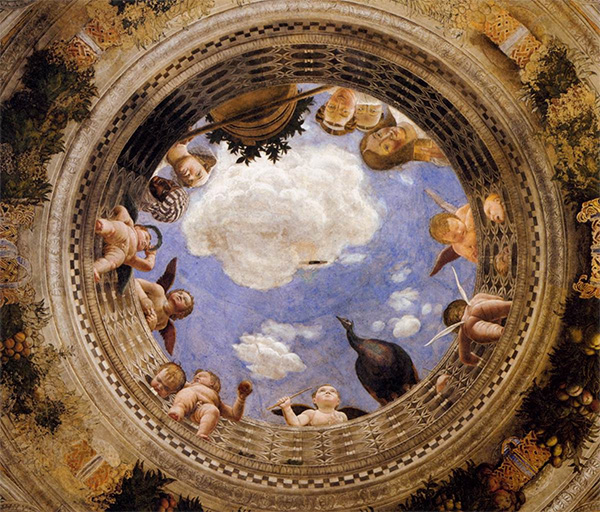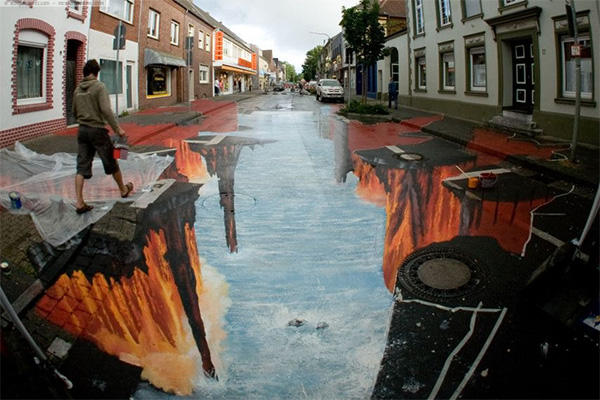Classical artists learned to paint realistically so viewers could easily recognize the people and background in the painting. They utilize different elements of painting to create their oeuvre. Perspective, the use of light and shadow, contrast, texture, colors, hues, and composition, are some of the elements that artists use to create depth and realistic environments.
Trompe l’oeil
Paintings many people call trompe l’oeil are paintings that use forced perspective to deceive the observer into thinking that the painted environments or objects are real. The paintings simulate three-dimensional spaces and objects created on a 2D plane. The artist shows his mastery of many painting techniques to give the painting a sense of realism and dimension. Trompe l’oeil, a French term, translates to” fools the eye,” meaning you can see something with depth, and it is one of art world’s oldest optical illusion techniques. Rendering the subject in great detail and excellent realism are the top features of trompe l’oeil paintings.
Trompe l’oeil dates back to the ancient Roman and Greek eras, where it was used to create decorative and intricate decorations and murals. The painting technique is still common today, applied to murals, graffiti art, and architectural decorations.
Trompe l’oeil’s history
The term came from the name of a painting created by Louis-Léopold Boilly and displayed in the 1800s at the Paris Salon. Although the term did not become a by-word until the 19th century, but the technique used in this type of painting dates much earlier. A Greek fable states that a painting contest pitted the skills of two painters, Zeuxis and Parrhasius, to see who was the better realistic still-life painter. Zeuxis painted grapes that were so realistic that birds flew down to pick at the grapes. On the other hand, Parrhasius asked Zeuxis to draw back the curtains to view what he painted. However, what looked like frayed curtains were part of Parrhasius’ work, which made him the winner.
Trompe l’oeil during the Renaissance
An interest in perspective drawing emerged during the Renaissance, although one painter, Giotto, started perspective painting near the end of the 1200s. Also, several late-Quattrocento Italian artists, including Andrea Mantegna and Melozzo da Forli, started creating illusionistic ceiling fresco works, which employed perspective and foreshortening to provide observers looking from below the impression of space. When applied to frescoes on the ceilings, the painting technique is called di sotto in sù (from below, upward).
A correct vanishing point of view shows the components drawn on the ceiling. An excellent example of trompe l’oeil is Parma Cathedral’s Assumption of the Virgin, created by Antonio de Correggio in 1530. Some of Vittorio Carpaccio and Jacopo de’ Barbari’s works used trompe l’oeil elements to experiment with reality and illusion.
Trompe l’oeil’s developing theories from the 17th century
In the 17th century, perspective theories allowed for a more holistic approach to the illusion, which artists called quadratura when used to open up the surface of a wall or ceiling. This approach includes Andrea Pozzo‘s Apotheosis of St. Ignatius (1694) and the 1639 work of Pietro da Cortona called Allegory of Divine Providence.
By the 16th and 17th centuries, Baroque and Mannerist Jesuit church interiors often used trompe l’oeil ceiling murals to visually open the churches’ ceilings or domes, showing images of Jesus or Mary in the sky.
Flemish and Dutch painters followed the trend in the 17th century when still-life painting started to rise. For example, Flemish artist Cornelis Norbertus Gysbrechts painted a chantourné (cutout) showing an easel supporting a painting. A chantourné refers to a trompe l’Oeil painting with the canvas cut in shape intended to make the viewers believe they are looking at a 3D object positioned away from the wall.
In the 19th century, still-life artist William Harnett was an excellent trompe l’oeil artist in the United States. From the 1960s, several U.S. buildings had large trompe l’oeil murals created by Richard Haas and other artists. By the 1890s, Germany had artists like Rainer Maria Latzke, who fused modern content into traditional fresco paintings. As trompe l’oeil became more common for murals inside buildings, Salvador Dali used the technique in several of his paintings.
Trompe l’oeil art today
Since the 1800s, the trompe l’oeil painting technique did not go out of style. For example, the trompe l’oeil mural created by Richard Haas on the exterior wall of the Fontainebleau Hotel in Miami was viewed by thousands from 1986 to 2002. Sadly the building was demolished in 2002.
Today’s street artists, such as Deer Feed, Jan Is De Man, Julian Beever, Kurt Wenner, and Edgar Mueller, apply the concept. They are just some of the street artists who successfully tricked people into believing they are looking at three-dimensional environments.
Photo Attribution:
1st & featured image by https://www.artlex.com/wp-content/uploads/2021/03/Pere-Borrell-del-Caso-Escaping-Criticism.png
2nd image by https://www.artlex.com/wp-content/uploads/2021/03/Andrea-Mantegna-ceiling-from-Camera-degli-Sposi.jpg
3rd image by https://d2jv9003bew7ag.cloudfront.net/uploads/Edgar-Mueller-Lava-Burst-2008.jpg


